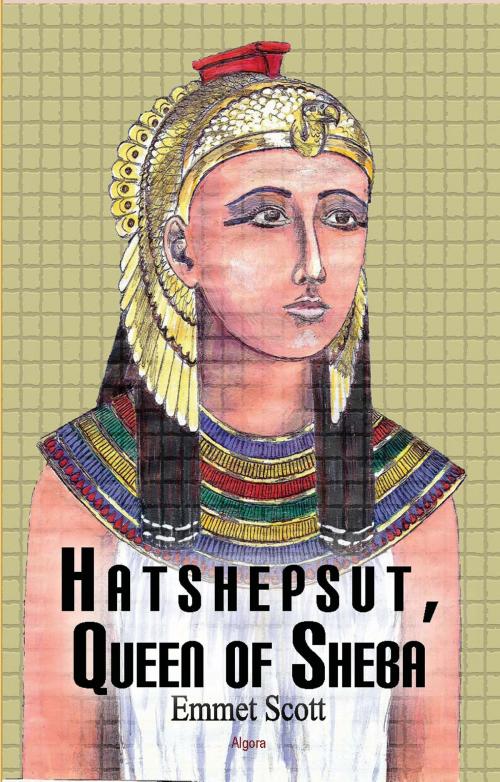| Author: | Emmet Scott | ISBN: | 9780875869476 |
| Publisher: | Algora Publishing | Publication: | December 15, 2009 |
| Imprint: | Algora Publishing | Language: | English |
| Author: | Emmet Scott |
| ISBN: | 9780875869476 |
| Publisher: | Algora Publishing |
| Publication: | December 15, 2009 |
| Imprint: | Algora Publishing |
| Language: | English |
Over the centuries the figure of the Queen of Sheba has loomed large in poetry and romance. The mysterious Queen, who is said to have visited Solomon in Jerusalem, has cast her spell over poets, painters and storytellers of many lands. The people of Ethiopia have always claimed her as her own, and to this day boast that her son Menelik fruit of the union between the Queen and Solomon stole the Ark of the Covenant from the Temple in Jerusalem after Solomons death.
For all that, historians have been more sanguine, and increasingly over the past century the academic community has veered towards consigning both royal characters to the fairyland of myth and romance.
In 1952, however, Immanuel Velikovsky made an astonishing claim: He announced that not only did the Queen of Sheba exist, but that she left numerous portraits of herself as well as an account of her famous journey to Israel. The Queen of Sheba, Velikovsky announced, was none other than Hatshepsut, the female pharaoh of Egypt, who built a beautiful temple outside Thebes on the walls of which she immortalized the most important event of her life: an expedition to the Land of Punt.
Punt, said Velikovsky, was one and the same as Israel.
In this volume historian Emmet Scott brings forward dramatic new evidence in support of Velikovsky. He finds, among other things, that:
- Ancient Israel, just like Punt, was a renowned source of frankincense.
- Egyptian documents, generally ignored in academic circles, unequivocally place Punt in the region of Syria/Palestine.
- The goddess Hathor was known as the Lady of Punt, but she was also known as the Lady of Byblos.
- The Egyptians claimed to be of Puntite origin, but Jewish and Phoenician legends claimed that the Egyptians came from their part of the world, and the Phoenicians named Misor almost certainly the same as Osiris as the Phoenician hero who founded the Nile Kingdom.
This, and a wealth of additional evidence, has, Scott argues, shifted the burden of proof onto Velikovskys critics; and the identification of Hatshepsut with the Queen of Sheba will eventually compel the rewriting of all the history books.
Joyce Tyldesleys Hatchepsut deals with the same character, but from an entirely conventional viewpoint. She never even raises the possibility that the accepted chronology of Hatshepsuts life may be wrong. In his Ages in Chaos, however, Immanuel Velikovsky did raise this possibility, and was the first to suggest that Hatshepsut be identified with the Queen of Sheba. Velikovskys work remains extremely popular, and the present book aims to take his ideas forward, exploring new evidence that has come to light since his death. This new evidence,Scott argues, puts the equation of Hatshepsut with the Queen of Sheba virtually beyond doubt.
Over the centuries the figure of the Queen of Sheba has loomed large in poetry and romance. The mysterious Queen, who is said to have visited Solomon in Jerusalem, has cast her spell over poets, painters and storytellers of many lands. The people of Ethiopia have always claimed her as her own, and to this day boast that her son Menelik fruit of the union between the Queen and Solomon stole the Ark of the Covenant from the Temple in Jerusalem after Solomons death.
For all that, historians have been more sanguine, and increasingly over the past century the academic community has veered towards consigning both royal characters to the fairyland of myth and romance.
In 1952, however, Immanuel Velikovsky made an astonishing claim: He announced that not only did the Queen of Sheba exist, but that she left numerous portraits of herself as well as an account of her famous journey to Israel. The Queen of Sheba, Velikovsky announced, was none other than Hatshepsut, the female pharaoh of Egypt, who built a beautiful temple outside Thebes on the walls of which she immortalized the most important event of her life: an expedition to the Land of Punt.
Punt, said Velikovsky, was one and the same as Israel.
In this volume historian Emmet Scott brings forward dramatic new evidence in support of Velikovsky. He finds, among other things, that:
- Ancient Israel, just like Punt, was a renowned source of frankincense.
- Egyptian documents, generally ignored in academic circles, unequivocally place Punt in the region of Syria/Palestine.
- The goddess Hathor was known as the Lady of Punt, but she was also known as the Lady of Byblos.
- The Egyptians claimed to be of Puntite origin, but Jewish and Phoenician legends claimed that the Egyptians came from their part of the world, and the Phoenicians named Misor almost certainly the same as Osiris as the Phoenician hero who founded the Nile Kingdom.
This, and a wealth of additional evidence, has, Scott argues, shifted the burden of proof onto Velikovskys critics; and the identification of Hatshepsut with the Queen of Sheba will eventually compel the rewriting of all the history books.
Joyce Tyldesleys Hatchepsut deals with the same character, but from an entirely conventional viewpoint. She never even raises the possibility that the accepted chronology of Hatshepsuts life may be wrong. In his Ages in Chaos, however, Immanuel Velikovsky did raise this possibility, and was the first to suggest that Hatshepsut be identified with the Queen of Sheba. Velikovskys work remains extremely popular, and the present book aims to take his ideas forward, exploring new evidence that has come to light since his death. This new evidence,Scott argues, puts the equation of Hatshepsut with the Queen of Sheba virtually beyond doubt.















